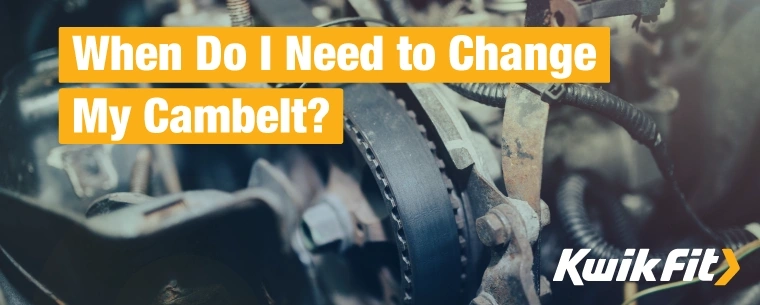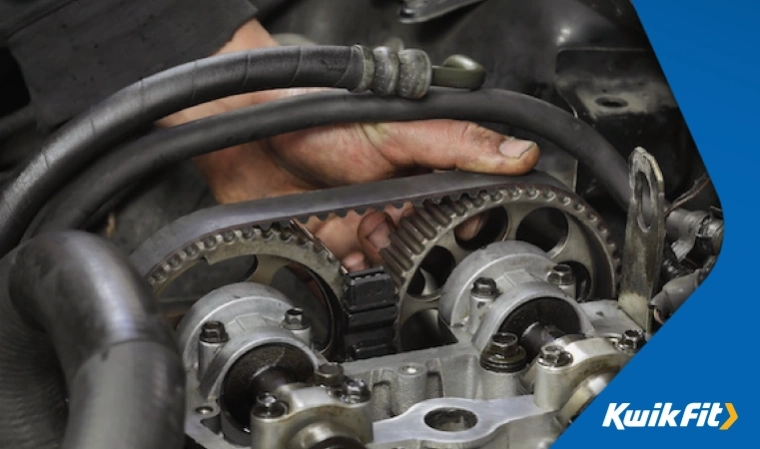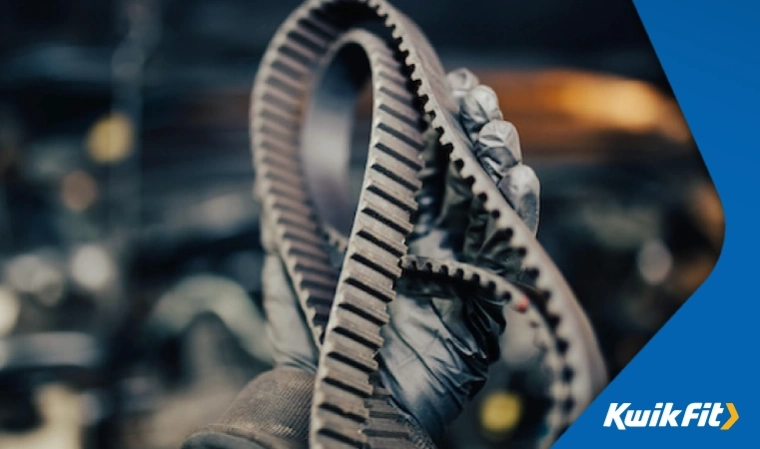When Do I Need To Change My Cambelt?
Jack Dreyer | Monday 22nd August 2022 8:00am

The cambelt is one of the most crucial parts of an engine, and yet very few drivers actually know a) what it is and b) how to tell if it needs changing.
Also called a ‘timing belt’, the cambelt is responsible for keeping all of the parts of an engine ‘in time’ with one another. Timing is essential for the smooth operation of a vehicle. So, if the cambelt packs up, there is little to no hope for the safe running of a car – and can even cause disastrous mechanical problems if it fails at speed.
But what actually happens when the cambelt breaks? And how do you know when yours needs replacing? Read on to find out.
How do cambelts work?
The cambelt’s main role is to control the rate at which your vehicle’s combustion engine operates. The engine’s timing is primarily controlled by altering the sequence of the valves to the cylinders opening and closing. This is done by syncing up the rotation of the camshaft and the crankshaft. Made of sturdy materials such as Kevlar and polyurethane, the cambelt has teeth on it that help keep these components in sync.
Let’s break this process down further:
- The camshaft is responsible for controlling the valves that let fuel and air in and out.
- At the same time as this, the crankshaft must lift the pistons up and down.
- If these timings are not in harmony with one another, the pistons, valves, or other engine parts may be damaged — all of which are not cheap fixes.
In some vehicles, the cambelt's function is replaced by a chain with metal links instead of the rubber belt. These tend to last much longer, but still sometimes fail.
When do I need to change my cambelt?

Usually, you should replace your cambelts (or ‘timing belts’) between 40,000 and 100,000 miles. Although, if your car has especially low mileage, the 4-5 year mark is a good time to replace the cambelt too.
However, these general guidelines are just that: ‘guidelines’. In the real world, accidents happen, faults go undetected, and anomalies occur with your vehicle. So, it is always wise to pay close attention to what your vehicle is telling you when it comes to its inner workings. The following signs are all indications that your cambelt might need changing.
1. Unusual noises
Location-wise, the cambelt is nestled deep within the engine, so it is often difficult to detect faults with it while driving. Unlike other parts like brakes or suspension, when cambelts start to fail, there may be little change in the handling of the car. That being said, if there is a serious issue with the cambelt, you may be able to hear it.
Before the cambelt snaps entirely, it may just wear down, leading to a rattling or slapping noise. A rubbing or abrasive sound from the belt cover is another indication that the belt is failing. Though, it is still incredibly difficult to predict when the cambelt will fail just from auditory clues alone.
If you hear a squeaking noise when driving, the chances are that the problem lies in your brakes.
2. Your car won’t start
A car not starting could be put down to a number of reasons — including cambelt failure. If the belt has broken completely, the camshaft will not be able to turn when the crankshaft turns, preventing the engine from working at all. If your car is having trouble getting going in the morning during the wintertime, though, it is likely to be a battery-related issue.
Maintain your cambelt health

Due to the difficulty of spotting cambelt faults, it is never a good idea to assume all is well beneath the bonnet. This is what leads to complete and often unexpected failure.
When you first buy a vehicle, especially a used one, it is essential to determine when the belt was last changed and when it will need to be changed again. A quick look in your manufacturer’s guidebook, or even a Google search, can yield the answers.
When the cambelt does need replacing, visit your nearest Kwik Fit centre and let the experts handle this tricky process. Before this, though, book in for regular servicing just to be sure.
If you have any questions about your cambelt health or the performance of any other vehicle parts for that matter, contact us today.
Any facts, figures and prices shown in our blog articles are correct at time of publication.
Featured Articles
Is it Illegal to Drive With One Headlight?
Saturday 19th July 2025
Wondering if it’s illegal to drive with one headlight? Learn about the safety risks and penalties of illegal blown bulbs and why you should fix them promptly.
Air Con in EVs & Hybrids: Experts Answer Your Questions
Monday 30th June 2025
Does air con drain EV batteries? Can you use the air con while charging an electric car? Find out the answers to these questions & more from Kwik Fit’s experts.
Why Is Your Car Making a Noise? Fixes & Tips
Friday 13th June 2025
When your car starts making unexpected noises, it can certainly be quite disconcerting; it may be nothing to worry about, but here’s what you need to know.









